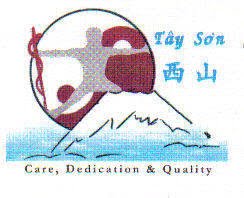Most allopathic medical schools have responded to this public interest by offering some elective instructions in CAM. Even a tentative proposal of core competencies in integrative medicine in undergraduate medical curriculum in allopathic schools was advanced in hope of instilling in graduating physicians the values, knowledge, attitudes and skills to improve physician-patient communication.
- DOs are better positioned to respond to this public interest thanks to osteopathic medicine’s long tradition of a holistic and preventive philosophy to patient care.
Musculoskeletal conditions and injuries are among the most common reasons for visits to physicians in the United States. They accounted for more than 131 million patient visits in 1995 and cost $215 billion annually. According to the National Center for Health Statistics in 2003 and 2004, 21% of individuals aged 18 to 44, 59% of those aged 45 to 54 years, and 98% of those aged 55 to 64 years reported limitation of activity due to musculoskeletal conditions. According to a 1999 survey of the Steering Committee on Collaboration among Physician Providers Involved in Musculoskeletal Care, the percentages MDs who felt adequately prepared to physically assess problems of low back pain and foot pain were, respectively, 31% and 10%. By contrast, the percentages of DOs who felt adequately prepared to assess low back pain and hand problems were, respectively, 84% and 41%. Thus, osteopathic training appears to be at the forefront of addressing major healthcare issues and fulfilling public demands for patient-focused care.
Physicians who are exposed to osteopathic medicine are well-positioned to treat musculoskeletal injuries, an area that is often underemphasized in MD training programs. In the late 1990s, nine physician organizations (including the American Academy of Pediatrics, American Geriatrics Society, and the American Academy of Orthopaedic Surgeons, among others) decided to work together to improve the diagnosis and treatment of musculoskeletal injuries in a cost-effective way by sharing knowledge.1 As part of their research, they surveyed physicians entering their residencies to see how these new physicians felt about their training in diagnosing musculoskeletal conditions. Thirty-one percent of MDs felt that their training to diagnose lower back pain was excellent or very good (compared to 82% of DOs).2 Fewer DOs than MDs reported that they felt “poorly” or “very poorly” prepared to address foot pain and other categories of pain. The authors observed, “The fact that the osteopathic medical school graduates felt quite well prepared to assess these types of musculoskeletal problems indicates to us that it is possible to provide a musculoskeletal education in medical school that would improve the students’ confidence to assess musculoskeletal problems regardless of what specialties they intend to practice.”3 The physicians’ organizations concluded that medical schools “should place more emphasis on these conditions so that young physicians entering their residencies will feel as well prepared to deal with such conditions as they are prepared to deal with problems found in other body systems… With appropriate reforms, all physicians who treat patients with musculoskeletal problems will know the appropriate diagnostic and treatment interventions and how to deliver them in a cost-effective manner. Their patients will benefit, and their health care burdens on society will decrease.”4
A similar study (in 2005-06) among Harvard Medical School students found that musculoskeletal education was important (rated a 3.8 on a 5-point scale, with 1 meaning “no importance” and 5 meaning “critical importance”). At the same time, though, the students rated the amount of time spent on musculoskeletal education as poor (rated 2.1 on a 5-point scale, with 1 meaning “inadequate” and 5 meaning “excellent.”).5 On an exam of cognitive mastery of musculoskeletal medicine, fourth-year medical students had a passing rate of only 26%; the pass rate for third-year students (7%) was even worse.6 According to the study’s authors, “[R]ecent studies suggest that the discrepancy between the magnitude of musculoskeletal problems and physician competency in musculoskeletal medicine likely stems from educational deficiencies at the medical school level.”7 Osteopathic medical education programs, are addressing this need every day.
References:
1. Clawson, D. Kay, M.D., et al. “It’s Past Time to Reform the Musculoskeletal Curriculum,” in Academic Medicine, Vol. 76, No. 7, July 2001.
2. Ibid.
3. Ibid.
4. Ibid.
5. Day, Charles S. MD, et al. “Musculoskeletal Medicine: An Assessment of the Attitudes and Knowledge of Medical Students at Harvard Medical School.” Academic Medicine, Volume 82, No. 5 (May 2007).
6. Ibid.
7. Ibid.


No comments:
Post a Comment